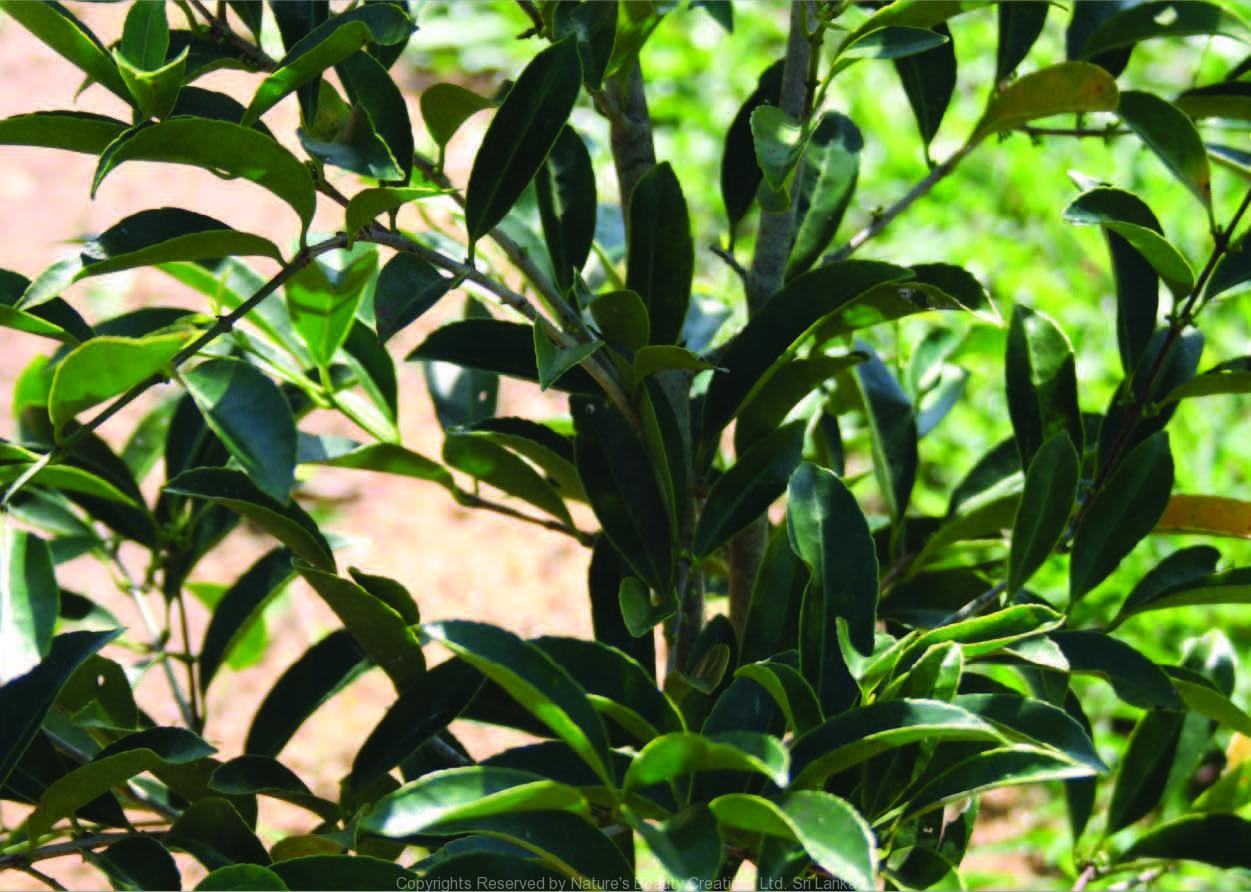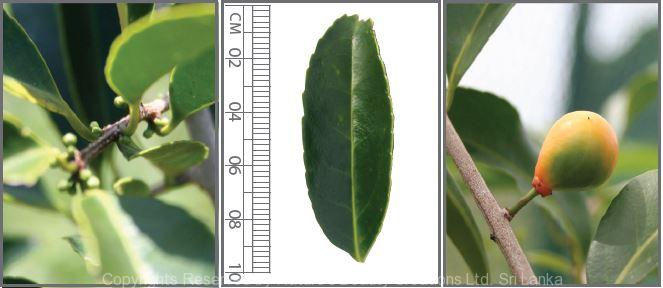

Traditional Knowledge
Useful plant parts :
Root and wood
Uses in traditional medicine :
- Pure water filled in a mug made of the wood and kept over night is taken for diabetes
- Root bark is used to treat rheumatism, gonorrhoea and skin diseases
Scientific Research
Chemical constituents:
Triterpenes: isoiguesterin, kotalanin 16-acetate and kotalanol, salacinol, quinine methides, xanthonoid: mangiferin from plant; proanthocyanidin oligomers: epigallocatechin, epicathechin, epiafzelechin from leaf and stem
Bioactivity :
Plant extract: decreases body weight, visceral and subcutaneous fat accumulation, blood glucose level and effective for treating abnormal lipid metabolism, fatty and enlarged liver; salacinol: α-glucosidase inhibitor; hot water and methanol extracts of roots and stems: hepatoprotective; oral administration of aqueous extract of stem: hypoglycaemic; proanthocyanidin oligomers: pancreatic lipase inhibitors
Clinical:
Kothala himbutu tea is effective and safe for treatment of type 2 diabetes; Leaves and root bark extract is benificial in management of prediabetes and mild to moderate hyperlipidaemia
References : Akase, T. et al., (2011), Preventive Effects of Salacia reticulata on Obesity and Metabolic Disorders in TSOD Mice, Evidence-Based Complemen- tary and Alternative Medicine, 1, 1-10. Jayawardena, M. H. S. et al., (2005), A double blind randomised placebo controlled cross over study of a herbal preparation containing Salacia reticulata in the treatment of type 2 diabetes, Journal of Ethnopharmacol- ogy, 97(2), 215–218. Karunanayake, E. H. and Sirimanne, S. R., (1985), Mangiferin from the root bark of Salacia reticulata, J Ethnopharmacol, 13(2), 227-8. Koga, K. et al., (2013), Proanthocyanidin oligomers isolated from Salacia reticulata leaves potently inhibit pancreatic lipase activity, J Food Sci, 78(1), 105-11. Li, Y. et al., (2008), Salacia root, a unique Ayurvedic medicine, meets multiple targets in diabetes and obesity, Life Sciences, 82, 1045–1049. Serasinghe, S. et al., (1990), Oral hypoglycemic effect of Salacia reticulata in the streptozotocin induced diabetic rat, Phytotherapy Research, 4(5), 205–206. Shivaprasad, H. N. et al., (2013), Salacia reticulata improves serum lipid profiles and glycemic control in patients with prediabetes and mild to moderate hyperlipidemia: a double-blind, placebo-controlled, random- ized trial, J Med Food, 16(6), 564-8. Yoshikawa, M. et al., (2002), Absolute Stereostructure of Potent α-Glucosidase Inhibitor, Salacinol, with Unique Thiosugar Sulfonium Sulfate Inner Salt Structure from Salacia reticulata, Bioorganic & Medicinal Chemistry, 10, 1547–1554. Yoshikawa, M. et al., (1997), Salacinol, potent antidiabetic principle with unique thiosugar sulfonium sulfate structure from the ayurvedic traditional medicine Salacia reticulata in Sri Lanka and India, Tetrahe- dron Letters, 38(48), 8367-8370. Yoshikawa, M. et al., (2002), Hepatoprotective and Antioxidative Properties of Salacia reticulata: Preventive Effects of Phenolic Constitu- ents on CCl4-Induced Liver Injury in Mice, Biological and Pharmaceuti- cal Bulletin, 25(1), 72-76.
Copyrights Reserved By
Natures Beauty Creations



